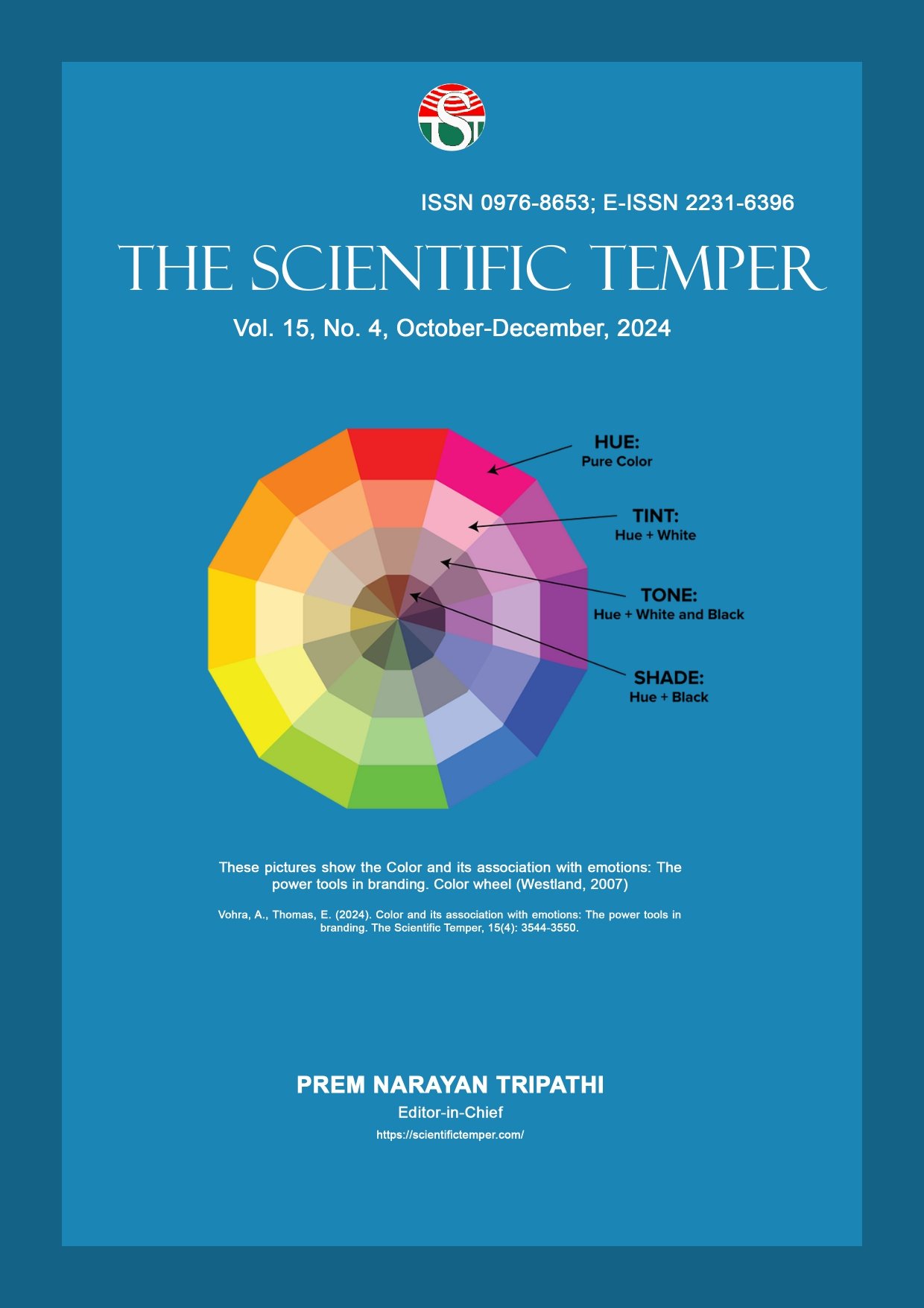Comparative Water Quality Analysis in Beso River in District Jaunpur, Azamgarh and Ghazipur Uttar Pradesh
Downloads
Published
DOI:
https://doi.org/10.58414/SCIENTIFICTEMPER.2021.12.1.11Keywords:
ppm, significant data, site of sampling (S1, S2, S3), μ S/cm,Dimensions Badge
Issue
Section
The Beso River originates from village Shahapur in District Jaunpur and enters in District Azamgarh after Jaigaha and finally merges into river Ganga in District Ghazipur Uttar Pradesh. It flows south-eastward for almost 95 km only through three districts of eastern Uttar Pradesh. The sample has been collected from three sites indicated by S. S1 from Lakhmapur Jaunpur, S2 from Lalganj Azamgarh, and S3 from Jakhania Ghazipur. The sample has been collected five times i.e. in May, August, November, January, and March on the second Sunday of the month in the year 2020-2021. During tabulation of data five reading from each sample have taken and bio statistically analyzed by students T-test for all parameters for all times and only significant data have been considered. The mean value for the pH as 7.4 Ammoniac Nitrogen as 66.0 ppm, Temperature as 28.660C, B.O.D 235.33 C.O.D 271, Free CO2 260 ppm TDS as 543.33ppm, Cu 2.47 ppm, Iron Total as 2.09 ppm Zinc 6.46 ppm, Cr 3.58ppm, Phenolic Compounds as 5.36 ppm and Conductivity as 373.73 μ S/cm. have been measured by implication of different techniques. During the investigation, only Cu and total Iron values are measured lower to normal while other parameters reported high to normal values. Overall all physiochemical data indicate the water quality tends to be increased polluted as river move to Sangam from Ganga. Yet the water quality of Beso is many times better than River Sai and GomatiAbstract
How to Cite
Downloads
Similar Articles
- C. Muruganandam, V. Maniraj, A Self-driven dual reinforcement model with meta heuristic framework to conquer the iot based clustering to enhance agriculture production , The Scientific Temper: Vol. 15 No. 02 (2024): The Scientific Temper
- J. M. Aslam, K. M. Kumar, Enhancing security of cloud using static IP techniques , The Scientific Temper: Vol. 15 No. 01 (2024): The Scientific Temper
- Lakshmi Priya, Anil Vasoya, C. Boopathi, Muthukumar Marappan, Evaluating dynamics, security, and performance metrics for smart manufacturing , The Scientific Temper: Vol. 14 No. 04 (2023): The Scientific Temper
- S. Vanaja, Hari Ganesh S, Application of data mining and machine learning approaches in the prediction of heart disease – A literature survey , The Scientific Temper: Vol. 15 No. spl-1 (2024): The Scientific Temper
- N. Saranya, M. Kalpana Devi, A. Mythili, Summia P. H, Data science and machine learning methods for detecting credit card fraud , The Scientific Temper: Vol. 14 No. 03 (2023): The Scientific Temper
- S. Dhivya, S. Prakash, Power quality assessment in solar-connected smart grids via hybrid attention-residual network for power quality (HARN-PQ) , The Scientific Temper: Vol. 15 No. 04 (2024): The Scientific Temper
- N. Ruba, A. S. A. Khadir, Session password Blum–Goldwasser cryptography based user three layer authentication for secured financial transaction , The Scientific Temper: Vol. 15 No. 01 (2024): The Scientific Temper
- Venkatesh R, A study on women empowerment by enhancing saving capabilities – through self-help groups , The Scientific Temper: Vol. 15 No. 04 (2024): The Scientific Temper
- P. Susai Raj, A. Edward William Benjamin, Evaluating the effectiveness of academic resilience intervention for at-risk students at higher secondary level , The Scientific Temper: Vol. 15 No. 04 (2024): The Scientific Temper
- Brijesh Singh, Ajay Massand, Determinants of Gen Z’s adoption of chatbots in online shopping: An empirical investigation , The Scientific Temper: Vol. 15 No. 04 (2024): The Scientific Temper
<< < 2 3 4 5 6 7 8 9 10 11 > >>
You may also start an advanced similarity search for this article.



